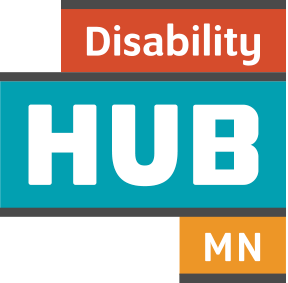People in the find phase have work goals and want to start looking for a job.
If they want help finding a job, they can apply for job search services through Vocational Rehabilitation Services (VRS) or State Services for the Blind (SSB).

Work Toolkit:
People in the find phase have work goals and want to start looking for a job.
If they want help finding a job, they can apply for job search services through Vocational Rehabilitation Services (VRS) or State Services for the Blind (SSB).


VRS/SSB services help a person find and get settled into a job that meets their strengths, interests and conditions for employment.
Service outcomes and activities are focused on employment goals.
VRS/SSB counselors provide counseling and guidance. This includes:
VRS/SSB employment service providers help people find jobs.
During the job search (E1PBA), this includes:
During job coaching and/or initial follow-up employment supports, this includes:
The VRS/SSB employment service provider also provides other services as authorized by the VRS/SSB counselor and the person to help meet their employment goals. See this summary of job-related services from the Minnesota Department of Employment and Economic Development.
The vocational rehabilitation process consists of the following key stages.
The VRS/SSB intake process is used to determine a person's eligibility for services and how quickly their services can start (also known as priority of service). For VRS/SSB services, people are given priority to receive services based on the significance of their disability and how functional limitations affect their ability to engage in competitive integrated employment.
The intake process is initiated by the VRS/SSB counselor, who schedules an intake meeting and provides general information about VRS/SSB. During the intake meeting, the VRS/SSB counselor:
Using their My Vault account, the person can share items in their employment portfolio, service plans and other important information.
The person may also need to share medical documentation to show their need for VRS/SSB services. If the person needs help getting and sharing this information, their waiver case manager and/or employment development service provider can help.
After the intake meeting, VRS/SSB determines the person's eligibility and priority for services. The decision is based on the person's needs, their disability and any functional limitations that affect the person's ability to work.
A person on Social Security Disability Insurance (SSDI) or Supplemental Security Income (SSI) is presumed to be eligible, but priority of service must still be determined.
VRS/SSB will notify the person of the decision within 60 days.
Once services can start, the VRS/SSB counselor holds an initial employment planning meeting with the person to create the individual plan for employment (IPE).
With the person's permission, VRS/SSB will invite the waiver case manager in this meeting. Waiver case managers are encouraged to participate to stay up-to-date on the person's job search and ensure any needed waiver supports are identified and documented in the waiver support plan.
Once initial employment planning is complete, the VRS/SSB counselor holds a job search placement meeting with the person and the VRS/SSB provider identified during planning. The waiver case manager will also be included if the person chooses.

When a person wants to move directly into a job search and does not want or need engage or plan services, a direct referral to VRS/SSB should be offered.
To help expedite the VRS/SSB eligibility determination and coordinate services, include any of the following available information:
You can help the person upload information in their My Vault account so they can easily share it with VRS/SSB. If the person doesn’t want to create a My Vault account, they can share the information with VRS/SSB in other ways (or they can sign a release that allows you to share information with VRS/SSB on their behalf).
Contact the VRS/SSB liaison or a local VRS/SSB office.
The VRS/SSB waiver liaison is a new role created to make it easier for waiver employment service providers and waiver case managers to connect with VRS/SSB.
If you're not sure where to start or you want to talk with someone who's been specially trained in working with waiver services, a VRS/SSB waiver liaison can be a great resource. You can connect with a VRS/SSB liaison any time you have questions about VRS/SSB or want to collaborate. If you have a good working relationship with your local VRS/SSB office or counselors, you don't need to work through a liaison.
Review the VRS and SSB Waiver Liaison Contact List to find a liaison in your area.
Most VRS offices are housed within a CareerForce location. Check this interactive map of VRS offices across the state and this listing of SSB offices. Help the person find the office that is most convenient for them.

Dually enrolled providers can provide both waiver employment and VRS/SSB services. It's important to help people understand their provider options and make an informed choice about which provider is best for them.
See a list of dually enrolled providers at MinnesotaHelp.info. Or, do your own search for a targeted list of dually enrolled providers:

Plan phase services result in a positive summary and portfolio of outcome products that inform the person's job search.
VRS/SSB counselors use the positive summary and items in the portfolio to:
Typically, the waiver employment service provider:
If the positive summary and portfolio aren't shared ahead of time, during intake the VRS/SSB counselor will ask the person if they have a My Vault account, what activities they've done and if they'll share the portfolio.

It's important to coordinate with the waiver case manager during find services to ensure needed long-term waiver supports are in place.
When creating a person's individual plan for employment (IPE), VRS/SSB professionals must identify the person's long-term employment support needs and confirm that the home and community-based service (HCBS) waiver will fund these services. Confirming waiver supports during initial VRS/SSB employment planning will ensure a seamless transition after the person gets a job.
To confirm access to long-term funding for employment supports, VRS/SSB counselors can help the person get a benefits lookup in their My Vault account (or, with a signed release, do it on their behalf).
To confirm HCBS waiver supports, VRS/SSB counselors can use the benefits lookup activity in My Vault.
While the person is looking for a job, it's important for the VRS/SSB counselor, job placement service provider and waiver case manager to stay in touch. A check-in is recommended at least once every 60 days.
When the person gets a job, the waiver case manager will plan for ongoing long-term support services. This includes:
Once the person gets a job, the VRS/SSB counselor, job placement service provider and waiver case manager must work closely to ensure a seamless transition to long-term support services through the waiver (if needed). This is especially important if a new provider will be stepping in.
When a person gets a job, the job search placement service provider will complete the VRS/SSB employment verification form and share it with the VRS/SSB counselor. They will also help the person upload it to My Vault and share it with the waiver case manager.
The VRS/SSB counselor will help the person notify the waiver case manager of the new job (or, with a signed release, will share the information with the case manager directly). The VRS/SSB counselor will also make sure the employment service provider shares the following information with the waiver case manager:
The waiver case manager will use this information to authorize waiver employment support services. This could take up to 30 days, so it's important to start the process immediately. The waiver case manager will also coordinate with the waiver employment support services provider (which may or may not be the same provider as the VRS/SSB job placement service provider).
A person's stability date (the date they're considered stable in their job) is determined by the VRS/SSB counselor and the person. This typically happens when:
When the person is stable in their job, they're ready to leave VRS/SSB services and transition to waiver employment support services (if needed).
The VRS/SSB counselor will inform the waiver case manager of the stability date. Based on earlier coordination, the waiver case manager should be ready to authorize waiver employment support services and make sure they're provided. The VRS/SSB counselor will stay in contact for up to 90 days and then close the person's VRS/SSB case.
At the Hub, there’s no such thing as a wrong question. We're here to help. Contact us Monday to Friday, 8:30 am to 5 pm.
